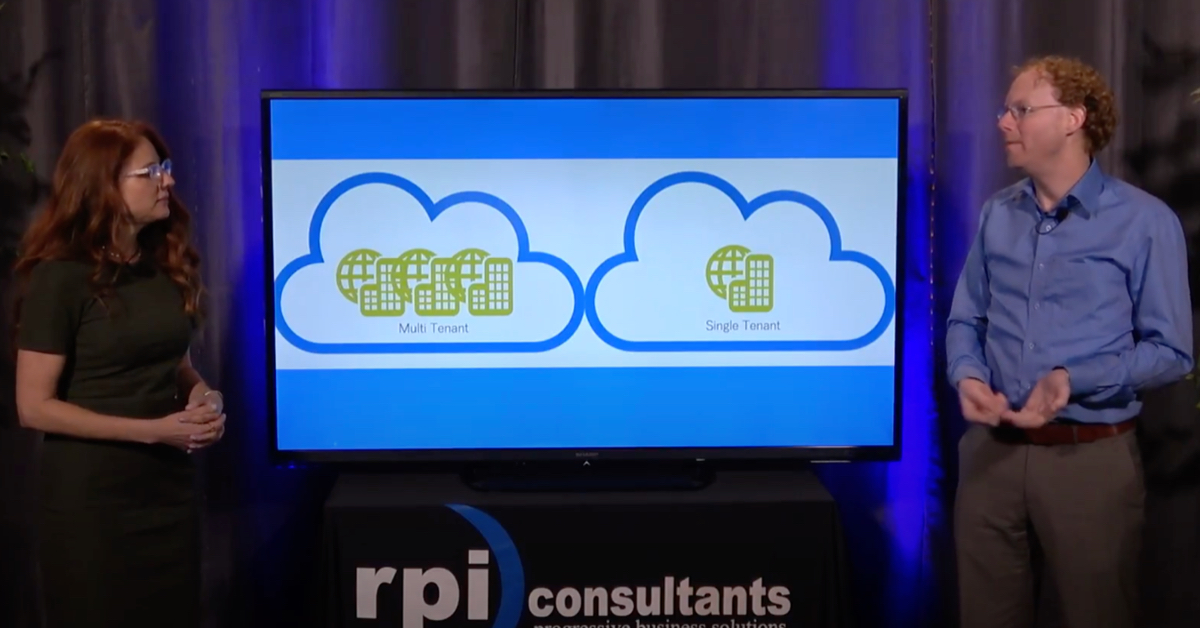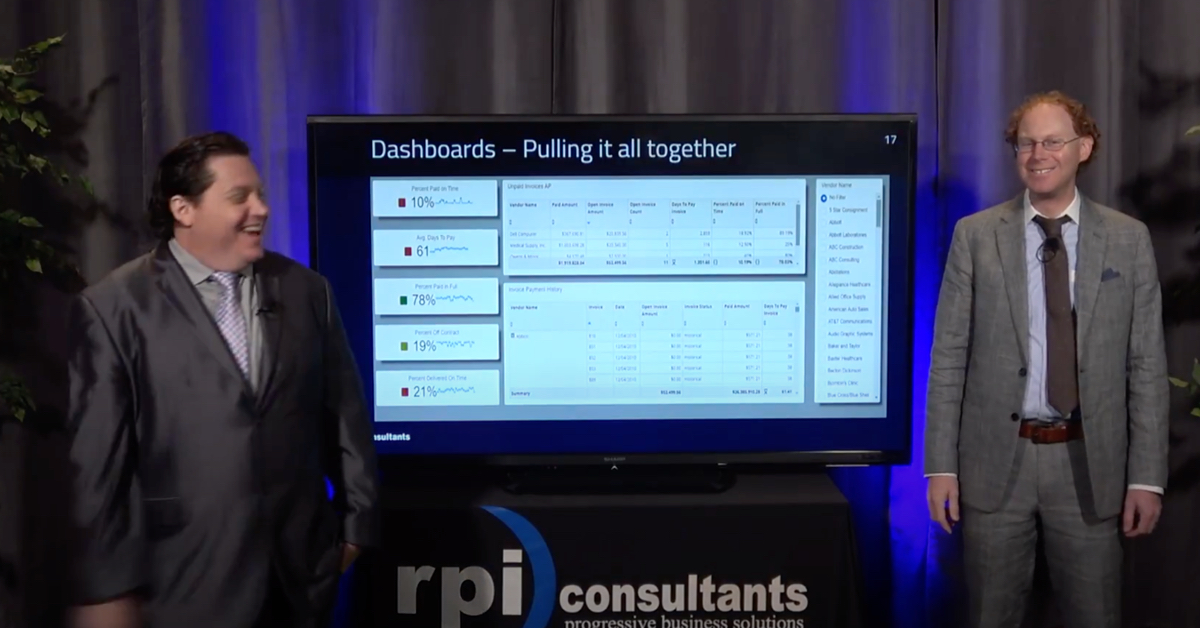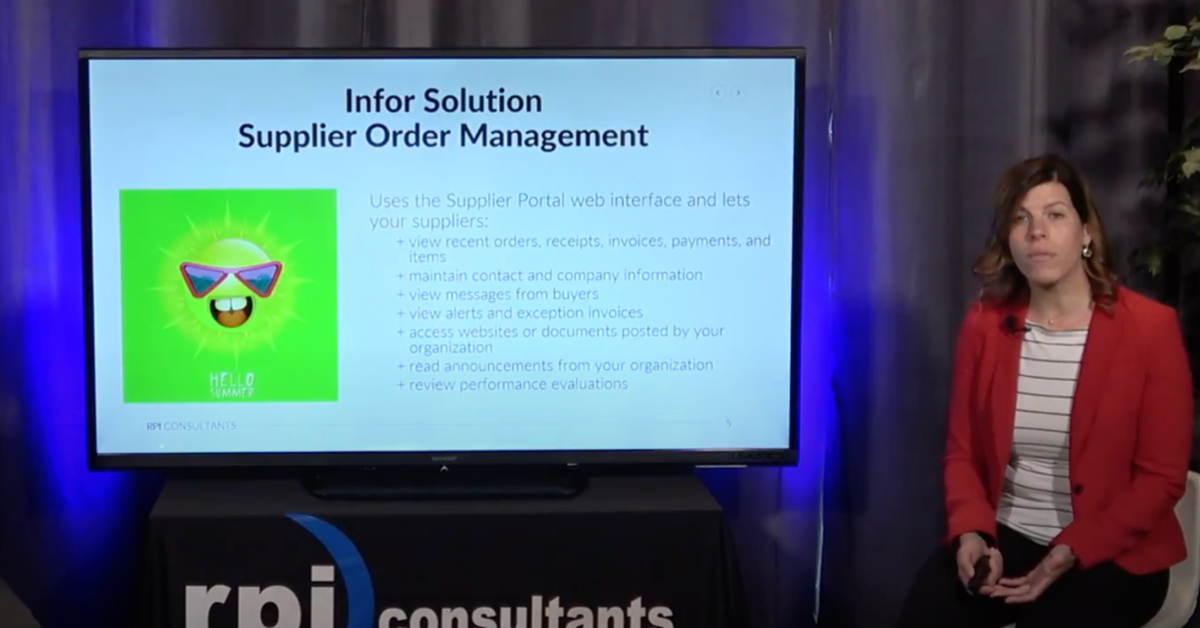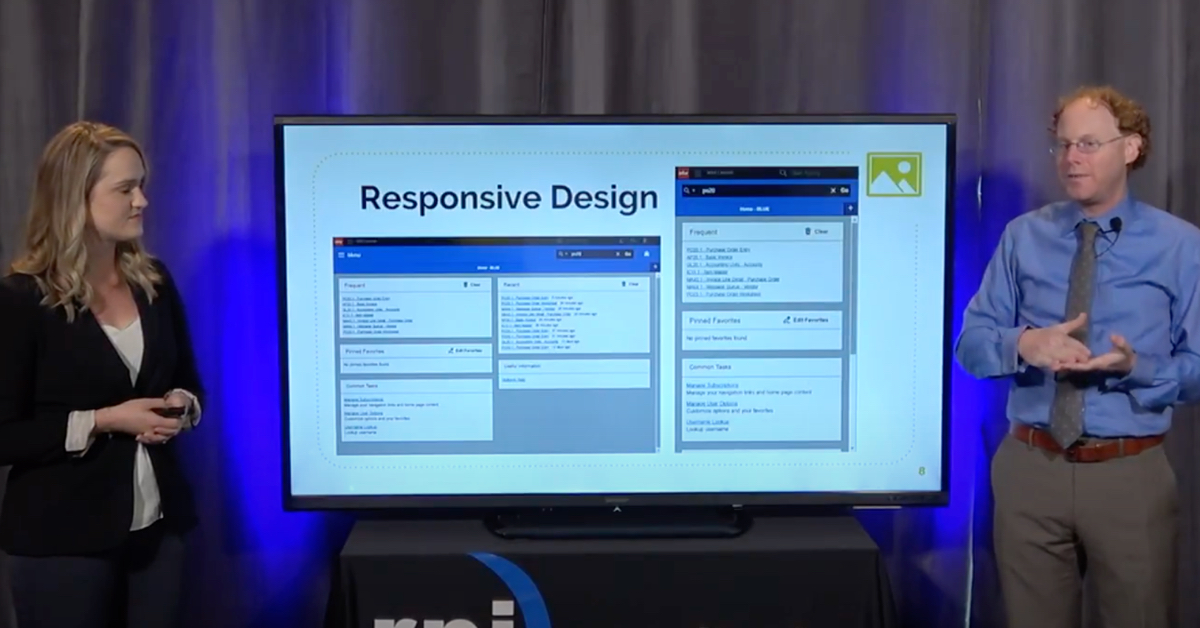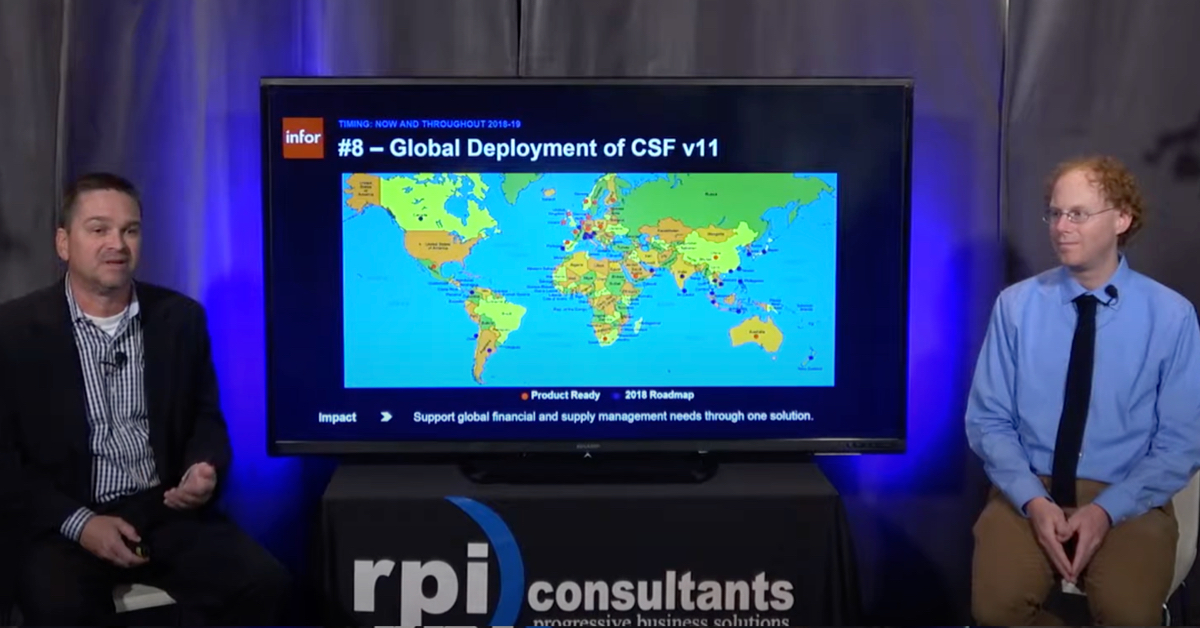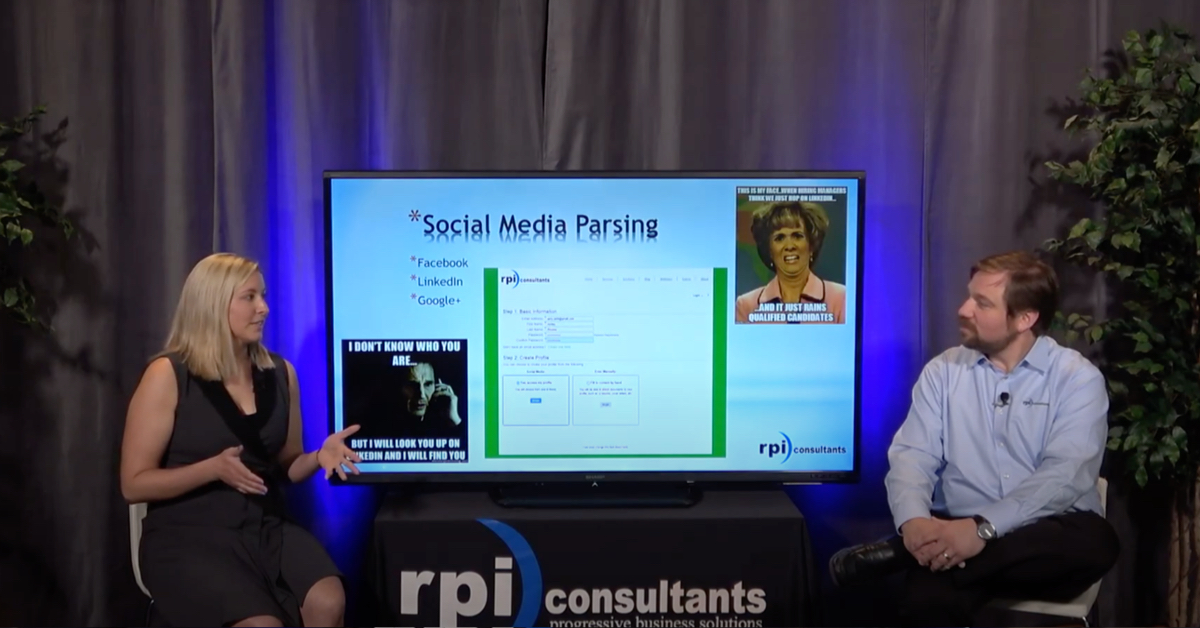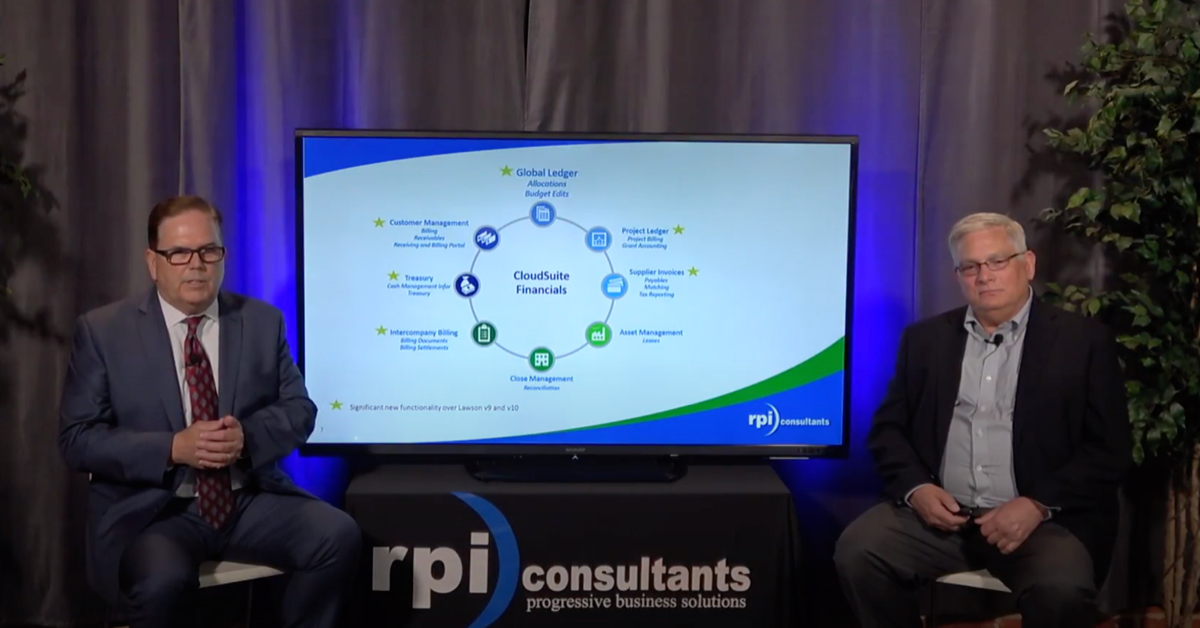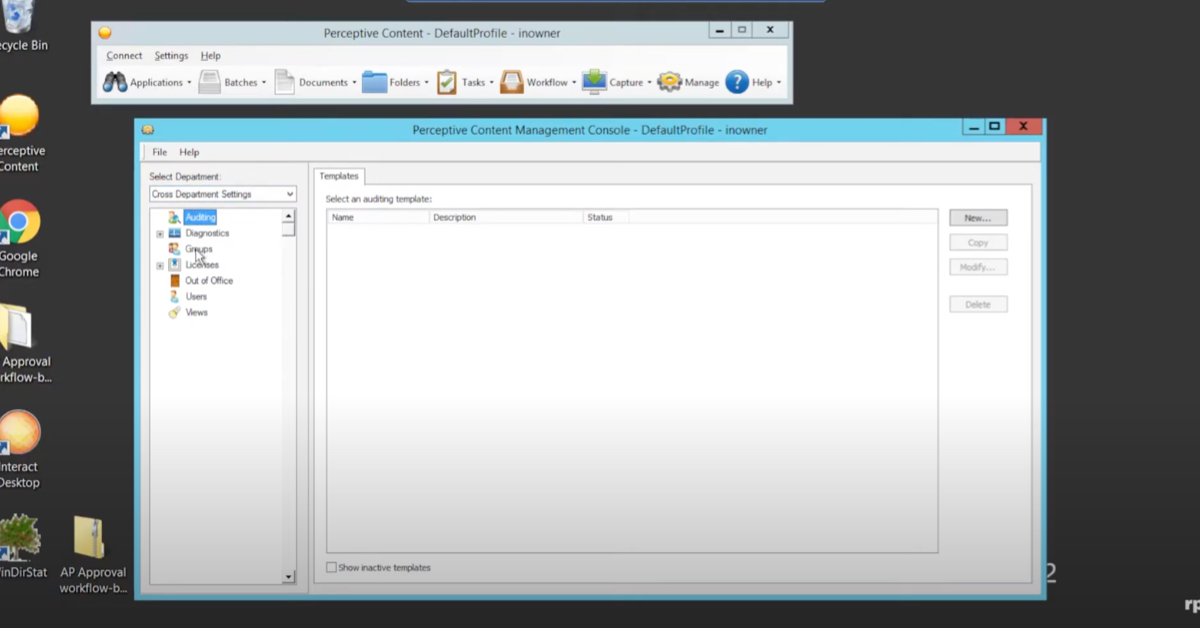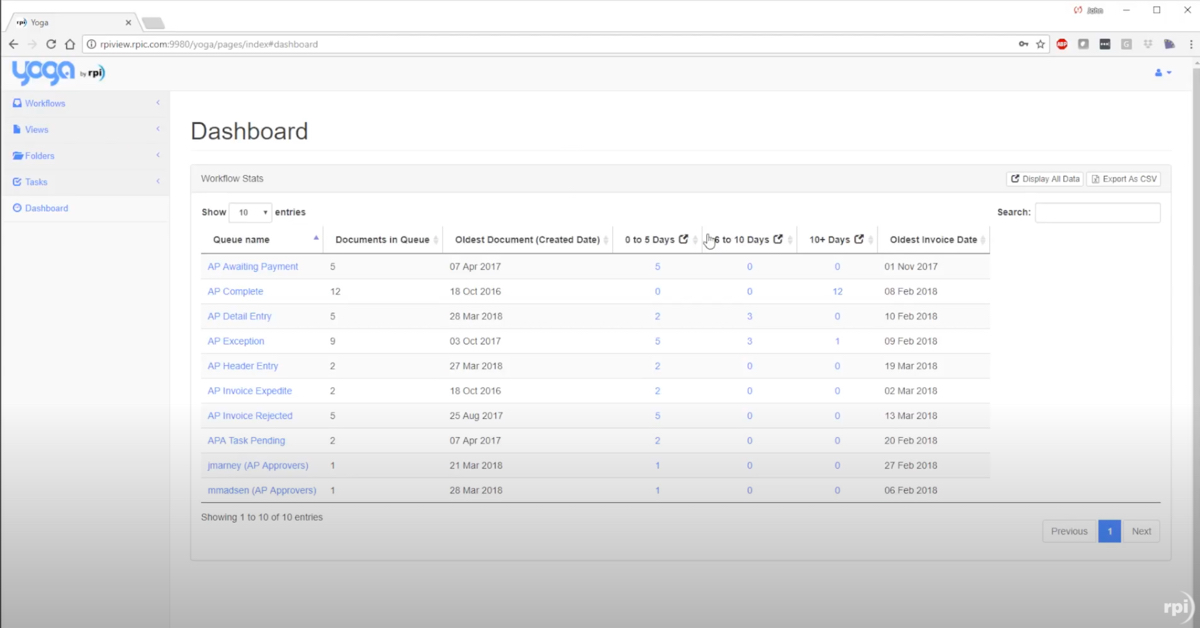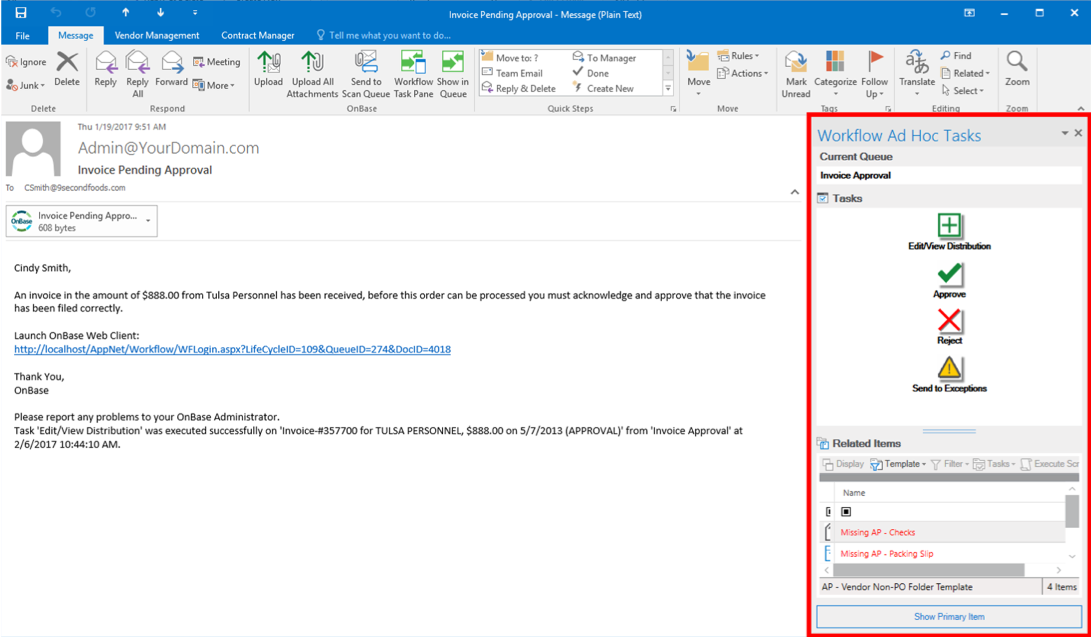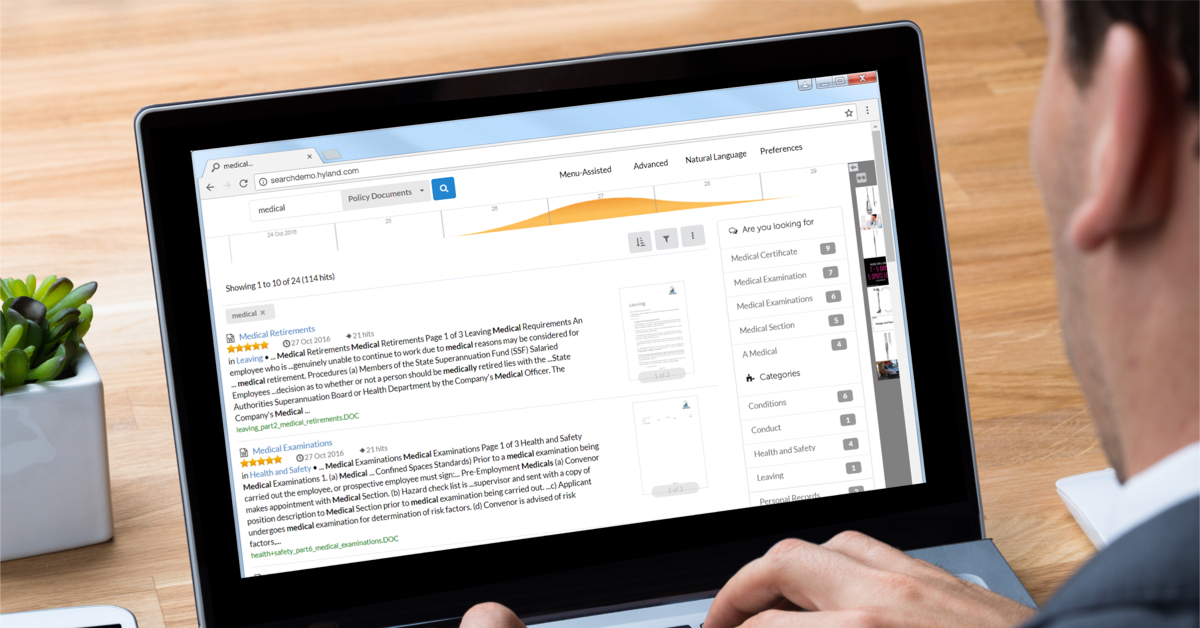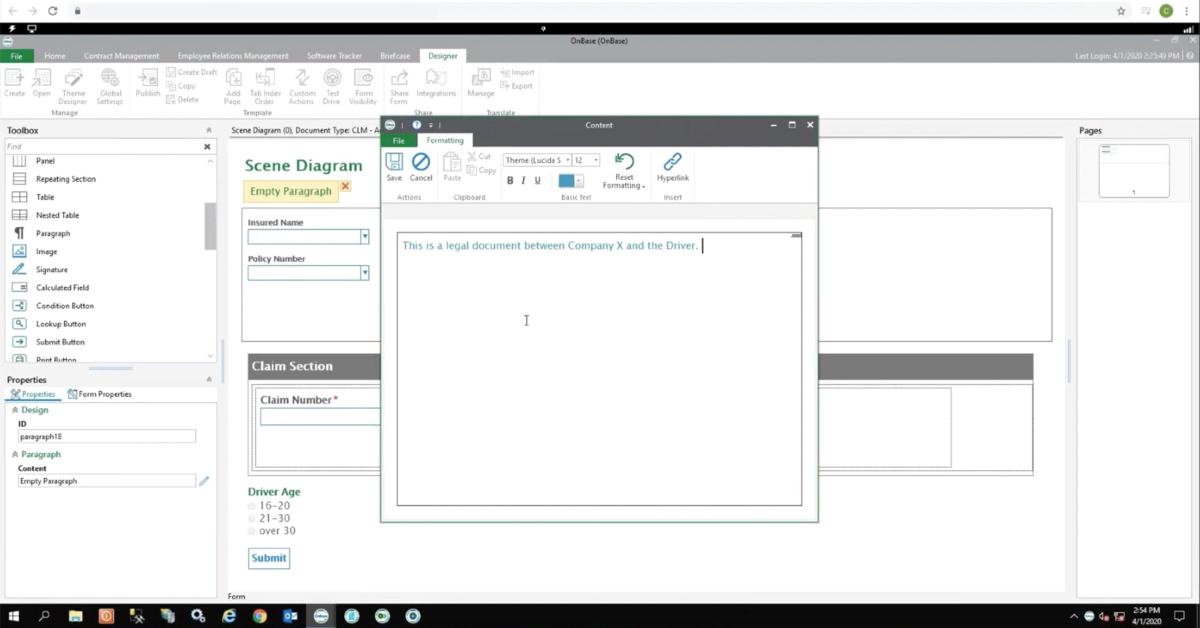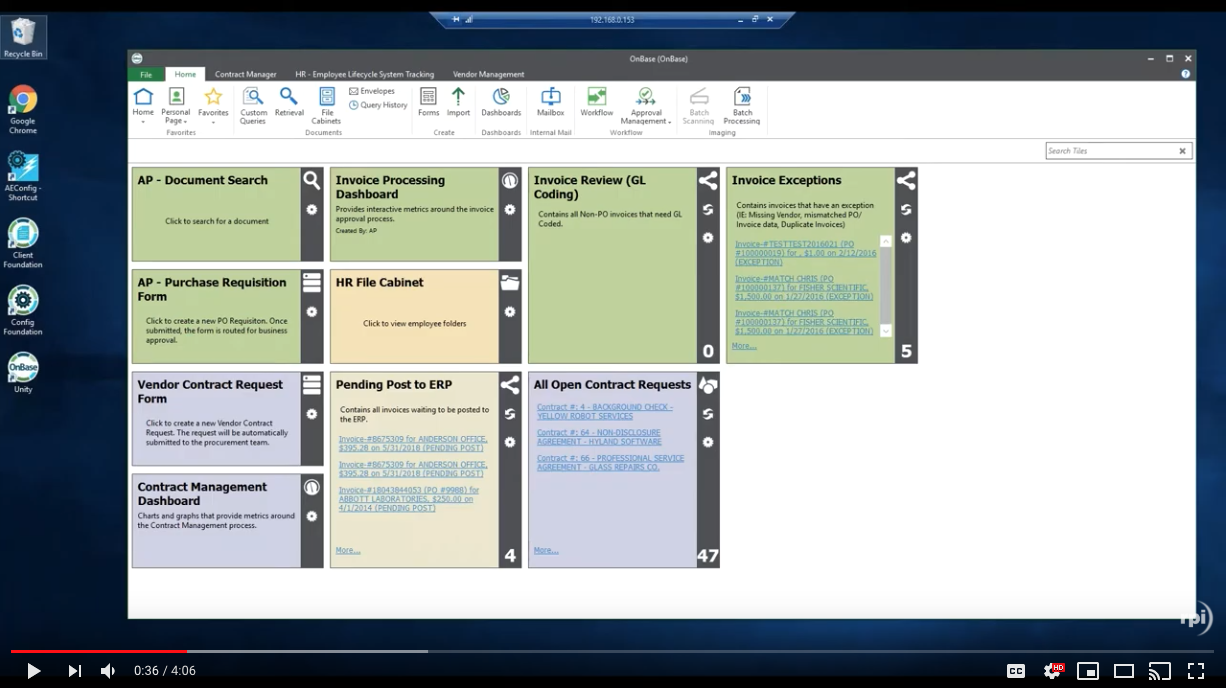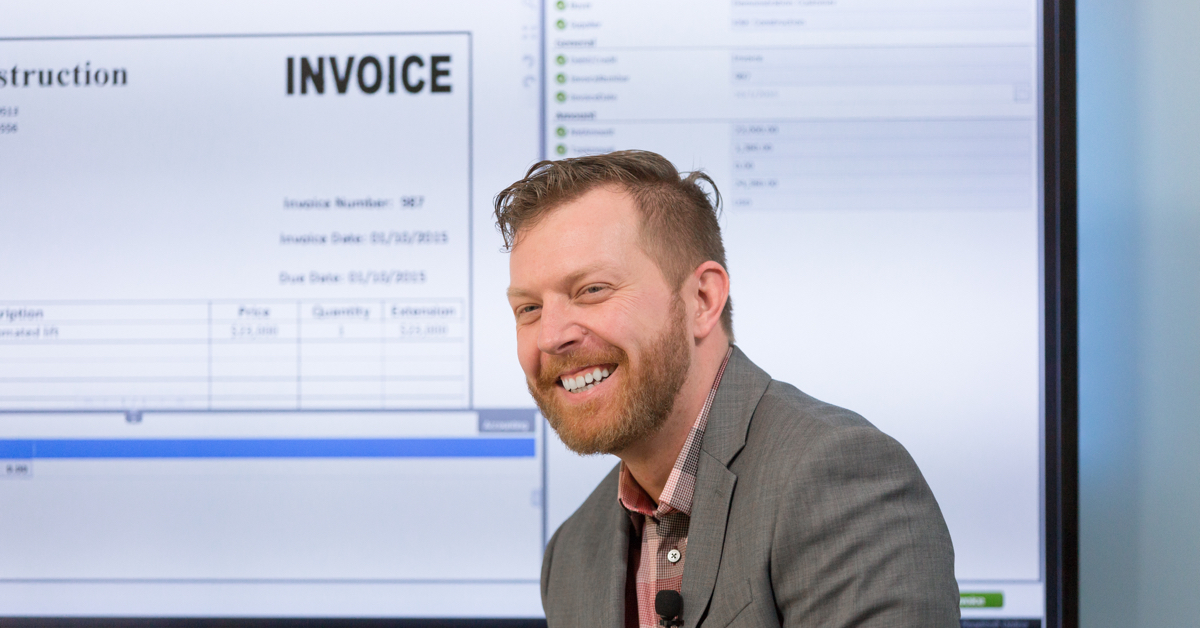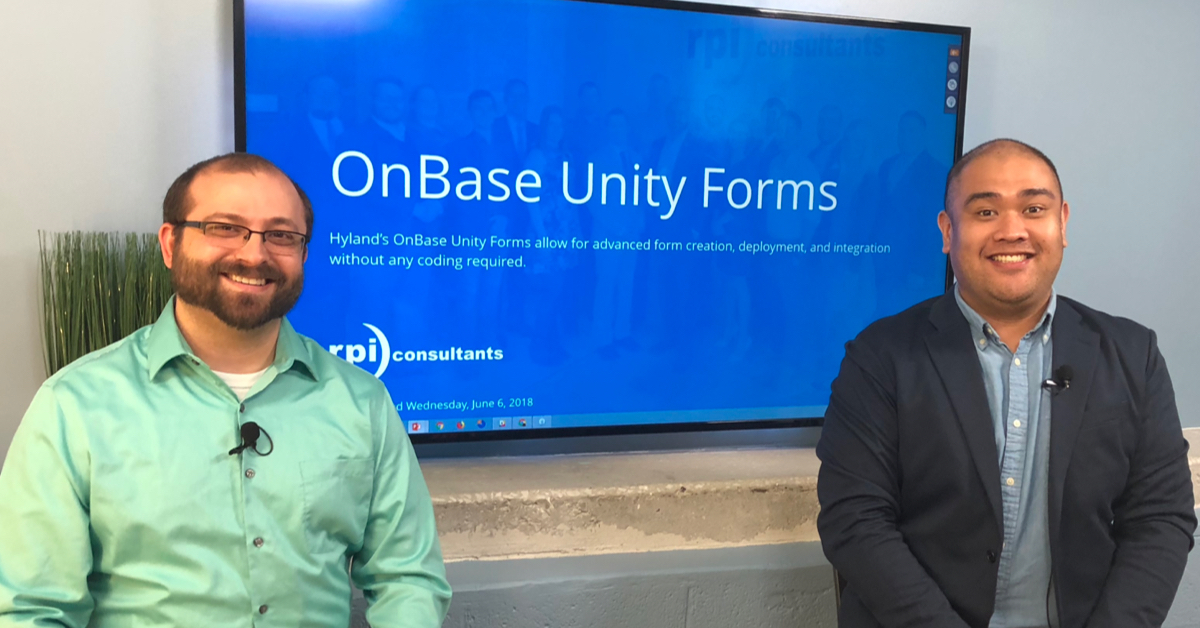2021 Budgeting for Enterprise Content & Intelligent Automation
It’s nearly the end of the year, and for most of you that means budgeting and project planning for your business applications and systems. Before you start allocating funds or reserving resources, let us help with a few recommendations on where you can get the most out of your budget.
In this webinar, Senior Account Executives Jim Fall and Patrick Wise will review product specific end-of-life dates for Kofax, OnBase, and Perceptive, and share our perspective on trends and emerging technologies – and how they can fit into your enterprise technology stack.
Find the transcript of this webinar and all our previously recorded webinars online at www.rpic.com/knowledgebase.
Transcript
Jim Fall:
Well, welcome everyone. This is Jim Fall with RPI Consultants, and we have also Patrick Wise, Patrick you want to say hello?
Patrick Wise:
Hello.
Jim Fall:
Welcome everyone. Hard to believe, here we are, the end of the year. It’s been quite a year, hasn’t it? I started the year, January the first in New York City and had no idea that it was going to be this kind of the year. So, let’s finish out the year and get ready for next year. So, what we want to talk about today is planning for next year, and planning for 2022 as well. So, as you look at your business processes, you look at your business initiatives, look at your technology infrastructure, your goals, objectives; how do we help you bring all that together and plan for the next couple of years? So today we’re going to be talking about that. What are the different things to take into consideration? What do you have today? And where do you want to go?
So, hopefully we generate some thoughts, some ideas that we can build upon and go forward from here. But with that, let’s give a little background on who’s here today. So, I’m Jim Fall. And with RPI, go three plus years, but many years of experience in enterprise content management, document management, capture. I go back before the days where it was not even called document management, but worked with a lot of different databases, very active in healthcare industry, currently president of the Indiana Chapter of hymns with a focus on a variety of industries. I’m a winter person. I’m sure there’s going to be a lot of groans out there. And when I say that, but I’m looking forward to getting my skis out.
Patrick Wise:
Okay. I am Patrick Wise, and I have over 15 years’ experience working with enterprise content and document management, automation and data capture solutions. Having focused in healthcare, manufacturing and finance, but have worked across a wide variety of vertical segments. I love all things combat sports, Jiu Jitsu, kickboxing, wrestling in May. Both my son and I compete in Jiu Jitsu, and we’re really looking forward to things getting back to normal with regards to that sport though.
Jim Fall:
So, Patrick, why don’t you tell us what we’re going to talk about today?
Patrick Wise:
Absolutely. So today on our agenda is; the first little bit, we’re going to talk a little bit about products, end-of-life cycles, roadmaps rather, enterprise software and technology strategies. We’ll go over a few key focus areas. Of course, some stuff about RPI, working with a trusted partner like RPI Consultants. We have a section at the end for some questions, maybe discussion and summary notes around that. Appreciate you joining us today.
Jim Fall:
And this webinar will be recorded and posted on our website. So, you don’t have to take notes and all the content will be available to you. So, there’s a lot of information here, so hop onboard.
So, let’s talk about product roadmaps and delight strategies, dates. You’re dealing with a lot of technology in your enterprise. So, this has been a crazy year. Some of the end-of-support dates may have slipped by you on some of the products, some of the end-of-support dates, you may not be aware of coming up in 2021. So, I’m going to try and give you a little bit of a roadmap on what’s happening with some of the major technologies that we work with. There’s a lot of information here, and again, this information will be recorded and available to you to watch it any time.
So, giving an idea of the end-of-support policies, if you look across the software industry and you’ll see here; Hyland, Kofax, almost identical statements from their standard policies and strategies relating towards and to support dates. But at the end of the day, it’s basically in a support date is when there’s no longer updates, patches to those versions and future fixes will be done in the…then current version of the product. So, something to take in mind, it doesn’t mean that you can’t use the products after the end-of-support dates, but there may be additional cost associated from your software vendor for supporting those products going forward.
But it’s something we should all take a look at and keep in mind; what are our upgrade strategies within our organization? Also, you need to take into consideration; what are the operating systems, the databases that you’re running today? And what versions of your corporate operating environment is running today? And are these technologies compatible with what you want to have in terms of your Microsoft environment? Or are you a Linux environment? Are you Oracle? What are the current versions that are supported by the current versions of the Kofax and Hyland products? So, something to take into consideration as you’re planning your upgrade strategies.
So, the next couple of sides are going to be a lot of dates, a lot of versions, but this will just give you an idea in terms of where we are and what versions are hanging around out there. So, you look at in terms of the current version perceptive is EP2. EP3 is scheduled or sometime this month. And so, stay tuned for that, but the current long-term support version or Perceptive Content is Foundation EP2. We see a lot of versions out there within our client base, version 1.5 to 7.3. After 7.3, then that went to the EP naming convention.
But as you look at it in terms of a date that may have slipped by some of you versus 7.1.5, went end-of-support in July. Coming up, got 7.2.2. This is going end-of-support in May. So, something to take into consideration as you’re working on your technology plans for this year. If you’re a user of Brainware, current version is EP1, and look at in terms of version 5.7 went end-of-support in July of this year, and 5.8 is going end-of-support in October of next year. So, keep that in mind, if you’re a current user of Brainware. And then also looking at it in terms of one of the extension Brainware for invoices, you can see what just recently went end-of-support 2.7. And I think we’ve seen a few customers out there. So, running 2.7 and looking at 2.8 is going end-of-support in September of next year.
So, if you look at Hyland, the current version of Hyland is a foundation EP4. The current long-term release version is EP3. So many of our clients are going to EP3 in terms of long-term support release and may look at going to EP5 when that comes out, in terms of the next long-term support. So OnBase 15, end-of-support, December 31st of this year. So, coming up soon. So, if you look at it in terms of timelines, something to build your plans accordingly. Kofax, a number of key current products Kofax capture and transformation, big movements on this in terms of the current version is 11.0. The prior version, 10 versions went end-of-support just August of this year. Kofax transformation, current version is 6.3.1. Kapow, current version is 11.1. 10.0 went end-of-support in September of this year.
And if you’re a 10.1, it goes end-of-support in March of next year, so things to take into consideration. TotalAgility, the current version 7.8, most recent one that went end-of-support is 7.5 in July. And you’re looking at 7.6 going in end of support in July of next year. And AP Agility, the current version is 2.3 and IP Agility is 1.1. So just a few of the core products within Kofax. A lot of changes happening on the products and something that we can help you as we dive in more deeply and working with you on your technology roadmap is get a detailed understanding of what products you have, where you are today and where you want to go.
Patrick Wise:
Okay. Yes. Thanks, Jim. Sorry about that. So, over the next few slides, we’re going to dive a little deeper into some of the challenges that we see our clients facing today, as well as some strategies that we deploy. And some are some strategies that we employ and some tools that we deploy for our clients to help them navigate today’s digital landscape, so to speak. So, Jim, I think the next slide is yours. And then after that, I’ll go again.
Jim Fall:
So, I feel like I’ve had a headache all winter, all year, and this has been a challenging year for everyone. I think one of the things that we’ve all had to deal with is how we work in our business has changed dramatically from March to today. And many of the things that we’ve gone to in terms of remote work environments, we still need access to data. We still need access to content. How do we work in this new normal? And as we go forward into 2021, many of the things that we’ve implemented today. We’ll probably still continue. Many of us do work remotely. There may be a larger percentage of the organizations staff that may work remotely versus in the office environment. Or you may work split between a work environment at the office and a work environment at home. So how do we provide access to the technology and improve business processes going forward?
Patrick Wise:
All right. Okay. So digital transformation has become quite the buzz word over the last few years. And in today’s crazy world, the demands for digitization carries even more weight than it did just even eight short months ago. And so digital transformation strategy is something that should be, probably is, a core strategic element in any corporate plan for success, especially over the next 18 to 36 months. The digital transformation mindset is really comprised of three primary focus areas; transform, accelerate, control, secure and govern. And so, when we talk about transforming, we talk about taking complex processes that require ingesting data and integrating unstructured data across your enterprise. We talk about ways to transform those into methodologies that are less complex and faster. So that brings us to accelerate where we use tools and processes to speed up the process of business using artificial intelligence and data capture capability.
We talk about control, secure and governance, controlling the flow of information both into and out of your organization to maximize the effectiveness of operations and speed to value of your investment, both in people and technology. And so, we’re not just talking about putting a bunch of fancy tools in place. We’re talking about improving the quality of life for your people and making those processes more effective through the use of technology as an investment media.
So, as you see here on the screen, you’ll see really these three areas all combined to become the seamless digital transformation strategies overall. And if you don’t mind switching to the next slide for me, Jim. Wonderful. So, we’re going to go over a few key focus areas. I think there’s five over here, five key focus areas over the next few slides. And its intelligent capture, content services, cloud services, robotic process automation, and some additional software tools. We’re going to talk about what those tools are and how they can help you as you plan for a digitization and the modern landscape moving forward.
Okay. All right. So, the first area that we want to talk about is intelligent capture or cognitive capture as referred to by some folks. With specialized tools for capture, we can implement solutions that integrate with line of business applications, like in for Lawson, Oracle, SAP, in ways that increase productivity and reduce costs. Additionally, cognitive capture tools provide increased data quality and accuracy while improving our clients-customer engagement and compliance efforts. So multiple applications across various vertical segments, when it comes to this intelligent capture, anything from finance and accounting, where we see invoice and document processing, e-invoice, sales order processing, all the way to insurance claims processing, where you have multi-channel claims capture and extraction processes that need to be automated. You have spark claims processing that our clients want to incorporate into their business. All of this information that needs to be put in the right place at the right moment in front of the right person, cognitive capture is really the sort of gateway to getting down that path.
Jim Fall:
Okay, So, let’s talk about content services platform, or many of you refer to as enterprise content management, ECM. But as we look at the content world today, content is more than just documents. Originally, we talked about managing documents, providing access to documents, but now we’re dealing with much more diverse forms of content, audio, video, multimedia, as well as documents. Documents come in a lot of different forms. You need access to the content across multiple platforms. It’s not just your desktop device. It’s a mobile device and we live in a mobile world today. So, you want access to that content globally, whatever device that you happen to have at that point in time. The content services need to map into how your people are working, how they’re wanting to access data, how they want to participate in the business process. So, all of these got to be supported across a content services platform.
The cloud. We’ve been talking about the cloud for a long time, and probably everyone is using some form of a cloud services application today. In my home environment, I probably use four different cloud applications that I can think of the top of my head right now, is we look at the organization’s technology environment, the infrastructure. We’re going to be dealing with a lot of mixed modes of on-premise and cloud environments. But as you look at your organization’s technology strategy, where is it that you want to go? What are the key applications that you want to have deployed in the cloud in terms of cloud services, cloud applications? And what, if any, do you feel like you need to have deployed on-premise? So, as you look at your business strategy going forward, where does the cloud fit in your technology strategy?
Patrick Wise:
All right. Okay. So, another tool that we have in our toolkit is robotic process automation, or commonly referred to as RPA. So, with RPA, we can help our clients achieve higher productivity, security, and quality all while driving down the cost of operation. In the case of software robots, automating manual and repetitive activities, RPA excels at virtually any multi-step business process across multiple systems, both internal and external data. So, as we described earlier, this is commonly referred to as RPA and is applicable to several different vertical segments, including banking, insurance, transportation, logistics, pretty much like I say, anything that is repetitive manual tasks that you do on a computer, logging into a website, downloading data from that website and putting the data into another place within or externally to your organization, RPA can help automate that process.
And that is an area of focus here at RPI, is part of our overall strategy. We can build robots for you, and we can teach you, empower you rather, to build robots on your own as part of your overall digital transformation strategy. Robots can be both attended and unattended, so they can be configured to run with humans at the helm, providing insight and validation and verification, and they can be configured to run without humans and being involved in the processing piece at all. Again, these robots can be configured to use systems both internal and external to your organization, both on your desktop and on the browser in the web. So, something definitely to consider as you continue to plan and strategize around digital transformation.
Next, we’re going to talk a little bit about some of RPI’s proprietary, flexible software tools that we use. RPI has created a unique set of tools to help us deliver strategic solutions that are focused to our client’s needs and goals that are very specialized for our client’s needs. One example of that is yoga forms, which is a flexible solution inside our yoga platform. Not all enterprise systems are built to accommodate the large amount of data that is captured in key through physical forms. Even electronic forms oftentimes are just, hey, download this PDF from our website, fill it out and then scan it and mail it to us or something. So, what we’ve done is we’ve created this platform within yoga forms to quickly design, deploy, and capture data from digital forms that we can build new forms for you, and we can empower you as well. Just like the rest of our technology solutions, we believe in empowering our clients to use these tools to great effect within their organization.
Jim Fall:
So, what’s next? I guess as we move forward from thinking about the range of technologies out there, where you are in terms of your current environment, so the step is what’s next? You can look at, RPI is your trusted partner. And one of the things that a trusted partner will do is they tell you what you need to know, not necessarily what you want to know. So, as we look forward in building out a strategy with you, let’s look at where things are, where they should need to go and provide a range of options for you to get to that point.
So, where we’d like to start is; where are you today? Let’s get in-depth understanding of what is your business strategy. What’s your technology infrastructure strategy? Let’s do the analysis. Let’s work with you to do a deep dive on what you have in place today. Let’s do an evaluation and provide recommendations on what should be changed, modified, replaced. Are there technologies that perhaps you’re not using today that we could provide a range of choices for you to pick from, or some ideas on what you might want to look at next? So that’s where we like to start is, let’s do a health check on your environment, let’s do a health check on your solutions, let’s do a health check on your business processes, such as your AP processing, is it fully automated? Is it partially automated? Are there opportunities to do more? How to you build your business processes into the technology and give you the flexibility of adapting the technology to your business processes. So that’s where we like to start.
Patrick Wise:
Awesome. Thanks, Jim. That’s some really good outline of our approach to strategic operations within our client’s environment. Some additional options that you have available to you through RPI are managed services and staff augmentation. And so outside of specifically scoped engagements, where we have a very specific set of deliverables that we’re doing, like for example, the health check that Jim is talking about, that health check is going to have a very specific scope to it, where we’re going to accomplish this health check. That’s what we’re going to do. Many times, our clients also need above and beyond type support. And so, there’s really three ways in which we support our clients for the most part, managed services, staff augmentation and ad hoc support. So, the first two on the list managed services and staff augmentation are more of a term-based contract.
And so, with managed services, they tend to be a lower demand for hours on a weekly or monthly basis. You have a continuous need over a longer term, 12 months or more. So, these are things in which our clients can contract with RPI for support of, day-to-day type support, where you request support from a dedicated resource or resources, 30 hours a week, 40 hours a month type support. Staff augmentation, we find that, tends to be a little bit shorter of a term, six to 12 months, maybe 18 months, 32 to 40 hours per week though. So, these are more along the lines of hiring a staff member from Marquis to be part of your team.
So full staff operation, we will attend meetings, we’ll be logged into your systems and we report your manager. So often we find our clients asking for this type of support, mostly when they have administrators who have decided to move into a new role or take an opportunity elsewhere. And they’re going to have to bridge the gap between now and nine months from now, when they’re able to replace that resource, or perhaps not sure when they will replace the resource, or if they will. So, this is an area where RPI can come in and support our clients, sort of an outsourced staff member. That’s fine. We’ll talk about ad hoc support.
All right. So ad hoc support is broadly scoped for flexibility. And what I mean by that is; we keep the scope broad on purpose so that we can put a lot of things under this ad hoc support umbrella. A single ad hoc support contract piece be set up to support multiple applications or multiple departments. There’re price points with ad hoc support for paying up for all of the hours at one time. So, you get a little bit of a price break for paying them for them all at once, versus just pay as you go. There are a minimum $25,000 commitment and primary areas that we see support being purchased from our clients are Hyland Software, Kofax. And then of course, for all of our own proprietary Yoga Flexible Software. I think that pretty much sums up the three services. Jim, did I miss anything there?
Jim Fall:
Okay. Yeah, no, I think so. I think you got to cover. Do you want to talk about the customer solutions?
Patrick Wise:
Absolutely. So when it comes to custom solutions, really what I would like to hear is some feedback from our clients, especially the folks on this webinar today, love to hear what your needs are, but essentially what it boils down to is these five areas; application development, custom scripting, web API, application enhancement and customization. And then of course, document and data migration. I think some of the most common ones are custom scripting. For example, within the Perceptive Content space, creating ice-scripts that handle a number of different needs. Our clients often contract us to come in and assist with that. And then of course, document and data migration, as you move from one system to the next, often you’re going to need to get that data as well as document images out of the current system and into the new one. That’s an area that we can come in and provide a lot of value and assistance around.
Jim Fall:
So, with that, we look at, we’ve talked about product versions and roadmaps. We’ve talked about some of the technologies to take into considerations, and we’ve talked about a range of engagements with RPI and how we can help you go forward. So, with that, we’ll leave it open to any questions at this point.
Patrick Wise:
Yeah. And I just like to encourage everyone on this call today, if you have a question, please ask it. We’re here to talk. Jim and I don’t charge for our time, so we’d love to chat with you about, just your ideas, your thoughts, your needs whatever they are, we’d be happy to have a chat anytime. So, feel free to ask questions on this webinar, but also reach out to us as well, and directly feel free. I believe Michael is looking for questions, right? Are we getting any questions?
Michael:
No. We don’t have any questions showing up at this time, if you guys want to move on, I will jump in if anybody does have some pop-up, but obviously you can email [email protected] at any time and we can get those questions right over to Patrick and Jim after the webinar.
Jim Fall:
Okay.
Patrick Wise:
Yes. And that recording of this webinar, as well as the slide deck will all be posted to our website. Right, Michael?
Michael:
Mm-hmm (affirmative). That is correct.
Jim Fall:
Yeah. And just as a wrap up, a little bit about…many of us, many of you work with on some very specific things, but I think the approach that we take is we’re technology agnostic. We have several key partners we work with, but one of the things that we really focus on is understanding what your need is and not try to force a single product into the square peg in the round hole. So, we have a lot of experience. Patrick and I, we have many years of experience in a lot of different industries, but we don’t claim to know everything. At least I certainly don’t.
So, one of the things that we have with the resources within RPI, we’ve been a lot of places and seen a lot of things. I think that somebody did an ad on that, but it’s the kind of thing where if you’re in healthcare we can bring a healthcare specialist in to talk to you about…and understand your environment. If you’re in manufacturing, or if you’re in higher education, our consultants are not going to be learning on your dime.
That’s something that we bring to the…your experience with us is the breadth and depth of experience in working with different organizations in different industries and with different technologies. So, we’re ready to wrap up. We’ve talked to you about a lot of different things, feel free to reach out to us. We’re here to listen. We’re here to make suggestions, we’re here to learn. So, thank you everyone for your time. Any last-minute questions, comments at this point, Patrick?
Patrick Wise:
No, I think I’m good to go. Again, to echo Jim here, thank you so much for joining our webinar. We look forward to speaking with you soon and have a wonderful day.
Jim Fall:
And if we don’t talk to you in the next couple of weeks, have a great holiday and we’ll see you in the new year.
Want More Content?
Sign up and get access to all our new Knowledge Base content, including new and upcoming Webinars, Virtual User Groups, Product Demos, White Papers, & Case Studies.
Entire Knowledge Base
All Products, Solutions, & Professional Services
Contact Us to Get Started
Don’t Just Take Our Word for it!
See What Our Clients Have to Say

Denver Health
“RPI brought in senior people that our folks related to and were able to work with easily. Their folks have been approachable, they listen to us, and they have been responsive to our questions – and when we see things we want to do a little differently, they have listened and figured out how to make it happen. “
Keith Thompson
Director of ERP Applications

Atlanta Public Schools
“Prior to RPI, we were really struggling with our HR technology. They brought in expertise to provide solutions to business problems, thought leadership for our long term strategic planning, and they help us make sure we are implementing new initiatives in an order that doesn’t create problems in the future. RPI has been a God-send. “
Skye Duckett
Chief Human Resources Officer

Nuvance Health
“We knew our Accounts Payable processes were unsustainable for our planned growth and RPI Consultants offered a blueprint for automating our most time-intensive workflow – invoice processing.”
Miles McIvor
Accounting Systems Manager

San Diego State University
“Our favorite outcome of the solution is the automation, which enables us to provide better service to our customers. Also, our consultant, Michael Madsen, was knowledgeable, easy to work with, patient, dependable and flexible with his schedule.”
Catherine Love
Associate Human Resources Director

Bon Secours Health System
“RPI has more than just knowledge, their consultants are personable leaders who will drive more efficient solutions. They challenged us to think outside the box and to believe that we could design a best-practice solution with minimal ongoing costs.”
Joel Stafford
Director of Accounts Payable

Lippert Components
“We understood we required a robust, customized solution. RPI not only had the product expertise, they listened to our needs to make sure the project was a success.”
Chris Tozier
Director of Information Technology

Bassett Medical Center
“Overall the project went really well, I’m very pleased with the outcome. I don’t think having any other consulting team on the project would have been able to provide us as much knowledge as RPI has been able to. “
Sue Pokorny
Manager of HRIS & Compensation
MD National Capital Park & Planning Commission
“Working with Anne Bwogi [RPI Project Manager] is fun. She keeps us grounded and makes sure we are thoroughly engaged. We have a name for her – the Annetrack. The Annetrack is on schedule so you better get on board.”
Derek Morgan
ERP Business Analyst

Aspirus
“Our relationship with RPI is great, they are like an extension of the Aspirus team. When we have a question, we reach out to them and get answers right away. If we have a big project, we bounce it off them immediately to get their ideas and ask for their expertise.”
Jen Underwood
Director of Supply Chain Informatics and Systems
Our People are the Difference
And Our Culture is Our Greatest Asset
A lot of people say it, we really mean it. We recruit good people. People who are great at what they do and fun to work with. We look for diverse strengths and abilities, a passion for excellent client service, and an entrepreneurial drive to get the job done.
We also practice what we preach and use the industry’s leading software to help manage our projects, engage with our client project teams, and enable our team to stay connected and collaborate. This open, team-based approach gives each customer and project the cumulative value of our entire team’s knowledge and experience.
The RPI Consultants Blog
News, Announcements, Celebrations, & Upcoming Events
News & Announcements
Selecting the Right RPA Automation Candidates
Michael Hopkins2024-02-28T08:48:00+00:00January 3rd, 2022|Blog, Professional Services|
10 Questions to Answer Before Implementing RPA
Michael Hopkins2024-02-26T13:58:28+00:00January 3rd, 2022|Blog, Professional Services|
Congratulations to our 2020 Scholarship Recipients!
Michael Hopkins2024-02-26T13:39:48+00:00January 20th, 2021|Blog, Our People are the Difference|
Sales Superhero Mike Gardner Retires from RPI Consultants
Michael Hopkins2024-02-26T06:07:47+00:00January 19th, 2021|Blog, Our People are the Difference|
RPI Donates over $10k in First Year of Charitable Giving Matching
Michael Hopkins2021-01-05T17:00:39+00:00January 4th, 2021|Blog, Our People are the Difference, Uncategorized|

